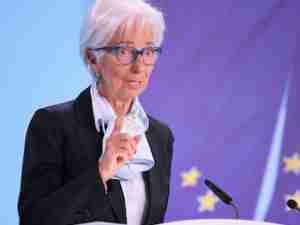The U.S. trade deficit narrowed in February to a four-month low as imports declined and exports improved amid a brighter outlook for global manufacturing, Commerce Department data showed Tuesday.
Key Points
- Gap decreased 9.6 percent to $43.6 billion from a revised $48.2 billion in January
- Compares with $44.6 billion median estimate of economists; January gap was originally estimated at $48.5 billion
- Merchandise-trade deficit shrank to $65 billion from $69.5 billion; advance February figures showed $64.8 billion last week
Big Picture
As the gap shrank in February, global growth prospects were improving, giving U.S. exporters a boost. Exports of goods and services reached the highest level since the end of 2014. The narrowing of the deficit may mean trade will be less of a drag on growth in the first quarter. Fading in dollar strength and a pickup in manufacturing sentiment could be a further boon to trade in the months ahead.
Imports declined in February by the most in nearly a year as demand for consumer goods and automobiles waned.
Just as some analysts attributed January’s deficit, the widest in almost two years, to a rush of shipments ahead of the Chinese New Year holiday, the February figure represented a reversal of that effect. China’s own trade data typically show big swings in January and February.
The Census Bureau figures showed America’s merchandise imports from China declined by $8.6 billion in February on an unadjusted basis, the biggest drop on record. The U.S. goods trade deficit with China narrowed to $23 billion.
The government’s figures will provide critical context as the administration targets partners for better deals in the months ahead. President Donald Trump on Friday ordered a comprehensive study to identify trade abuses by other countries that have contributed to the U.S. deficit, to be completed within 90 days.
Trump will meet for the first time Thursday with Chinese leader Xi Jinping, after Commerce Secretary Wilbur Ross labeled China last week as “one of the most protectionist” countries.
Economist Takeaways
“The continued rise in exports offers a somewhat encouraging picture of global economic activity. Viewed in isolation, the decline in imports could be troubling, but is tempered by the fact that it follows four months of rising imports,” Ward McCarthy, chief financial economist at Jefferies LLC in New York, said in a note to clients after the report. “The narrower deficit also provides less of a drag on measured GDP growth in the U.S.”
“I suspect that most of the swings in the first two months of the year were reflective of noise rather than signal,” Stephen Stanley, chief economist at Amherst Pierpont Securities, said in a note. “The timing of Chinese New Year clearly played a role, as consumer goods imports surged in January and fell back in February. In addition, auto imports declined sharply in February after sizable advances in December and January, which turns out to be a good thing in light of the weakness reported yesterday in March unit auto sales.”
Other Details
- After eliminating the effects of price fluctuations, which generates the numbers used to calculate GDP, the gap narrowed to $59.7 billion from $65.1 billion
- Imports decreased 1.8 percent to $236.4 billion
- Exports increased 0.2 percent to $192.9 billion, the highest since December 2014
- Value of shipments of motor vehicles and parts from the U.S. was the highest since July 2014



